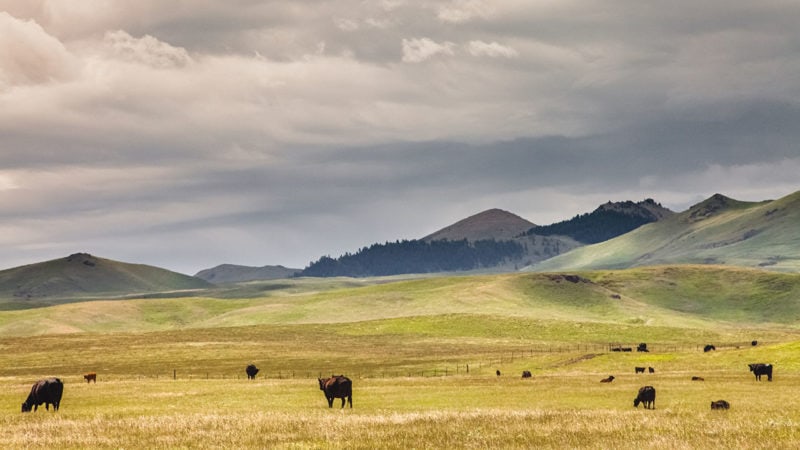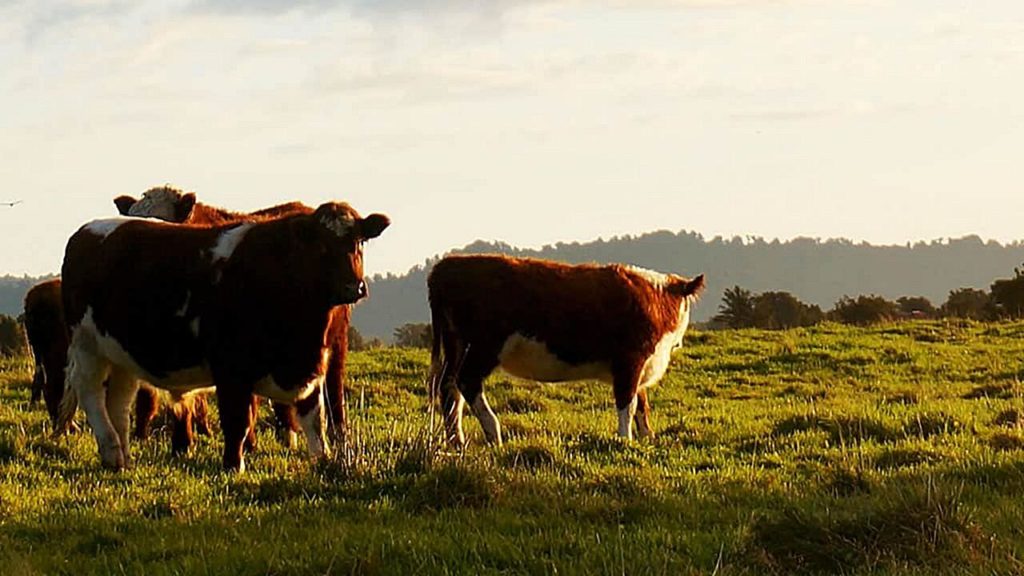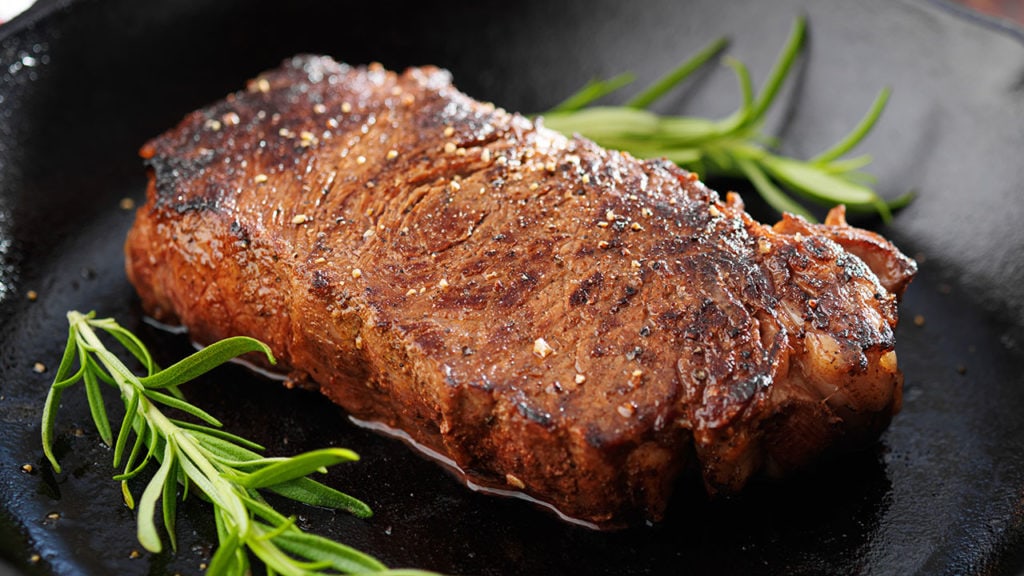Last Updated on January 28, 2025
Everything You Ever Wanted to Know About 100% Grass-Fed Beef
Grass-fed beef is beef that comes from cattle that eat grass—or other green forage—while grazing in open pastures for their entire life. However, some beef labeled as grass-fed beef doesn’t always fit this definition.
Grass-Fed and Grass-Finished Beef
One-hundred percent grass-fed beef comes from cattle that have only grazed on pasture, have never been fed grain or corn feed, and have eaten natural grasses its entire life. (This is why, at ButcherBox, we emphasize that our meat is grass-fed AND grass-finished.)
There is a great deal of misinformation about grass-fed beef out there. For instance, do you know that organic and grass-fed are not the same?
Read more in our guides below to find out why the “organic” label is not as important as whether or not a cow is grass-fed and grass-finished, is raised humanely, and has never ever been given hormones or antibiotics.
- What is Grass-fed Beef? What is Grass-Finished Beef?
- Grass-Fed vs. Grass-Finished
- Grass-Fed vs. Grain-Fed
- 100% Grass-Fed Beef vs. Organic Beef
Benefits of Grass-Fed Beef
Better for You
Grass-fed beef has a number of benefits, chief among them are that grass-fed, grass-finished beef has less fat. This makes 100% grass-fed beef the recommended choice of many of today’s most popular diets, including Whole30, the Paleo diet, and the ketogenic diet.
Leaner beef, for example, keeps the same protein profile as beef with more fat content. The “grain-finishing” that occurs on feedlots adds fatty marbling to beef and is done primarily to “fatten” the cattle for the market quicker than cows eating on pasture can gain weight.
Better for the Environment
There is plenty of debate when it comes to the environmental impact—positive or negative—of grass-fed beef.
Some scientists believe that with proper pasture management, emissions of cattle from the grazing system can be offset in the soil. When you account for the holistic farming picture, grass-fed beef isn’t just good for the environment, it’s also better for you and the animal.
To dig into how raising grass-fed beef can result in carbon sequestration in the soil, check out our article, Is Grass-Fed Beef Better for the Environment?
Buying Grass-Fed Beef
- Grass-Fed Beef in America
- Why It Is Difficult to Find Butcher Shops
- How to Buy Grass-Fed Beef with No Stores Nearby
Cooking and Eating Grass-Fed Beef
Rules for Cooking Grass-Fed Beef
Because grass-fed, grass-finished beef has less fat than conventional beef, it can easily be overcooked. Grass-fed beef tends to cooks 30 percent faster than conventional grain-fed beef, so you need to be paying attention while grilling or roasting. The American Grass-fed Association suggests that grass-fed beef is “ideal at rare to medium-rare temperatures.”
Check out more on the specifics of cooking grass-fed beef versus conventional beef.
Also, find out the best ways for cooking grass-fed steak or larger cuts of grass-fed beef in our guide, Different Methods for Cooking Grass-Fed Beef.
We’ll break down how to:
- Grill a grass-fed steak
- Pan sear grass-fed steaks
- Slow cook a large cut of grass-fed beef in a dutch oven or slow cooker
- You can also find more info on cooking grass-fed beef in an Instant Pot here.
Here are some of our favorite recipes using these different methods for cooking grass-fed beef:
- Pepper-crusted Grass-Fed Filet Mignon with Bacon Cider-braised Red Cabbage
- Pan-Seared Grass-Fed Top Sirloin Steaks with Bacon and Brussels Sprout Hash
- Braised Grass-Fed Chuck Roast with Red Wine and Mushrooms
Eating Grass-Fed Beef (The Good Part)
One question about grass-fed beef that often gets discussed is the taste. A lot of the descriptions we receive from members describe the grass-fed beef definitely tastes more like beef.
There is something to say for grass-fed cattle that have spent their whole lives on pasture eating various grasses and forage. Dan Barber, the chef of Blue Hill in New York and author of The Third Plate, sees beef in a different light: “A grain-fed steak tastes the same whether it’s raised in New York or New Mexico. Grass-fed beef tastes different based on the pasture the cattle were eating—which means it varies by farm and even time of year.”
Grass-fed beef has not only been described as having stronger beef flavor, but it has also been described as being more robust, gamier, and even as having “nutty undertones.”
For more on the flavor of grass-fed beef and more common misperceptions, check out:
Grass-Fed Beef Guide
Table of Contents
About Grass-Fed
- What is Grass-Finished Beef?
- Grass-Fed vs. Grass-Finished
- Grass-Fed vs. Grain-Fed
- 100% Grass-Fed Beef vs. Organic Beef
Benefits of Grass-Fed
- Grass-Fed Beef Benefits
- Grass-Fed Beef in the Most Popular Diets
- Is Grass-Fed Beef Better for the Environment?
Buying Grass-Fed
- Grass-Fed Beef in America
- Why It Is Difficult to Find Butcher Shops
- How to Buy Grass-Fed Beef with No Stores Nearby




